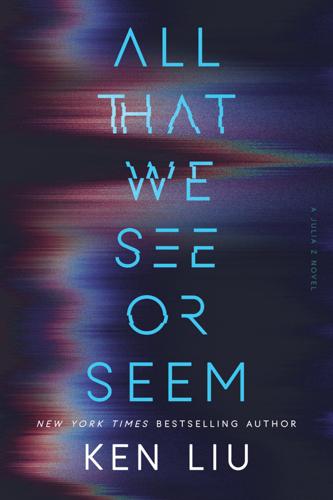
Ken Liu’s latest novel, All That We See or Seem, invites readers to reflect on the nature of creativity in an age dominated by artificial intelligence. Published by Saga on September 12, 2023, this 405-page narrative delves into the life of a missing artist named Elli, intertwining themes of art, identity, and the impact of technological mediation on humanity.
The story follows Julia Z, a hacker on a personal journey to locate Elli. Julia’s background as a runaway adds layers of complexity to her character, as she navigates a world saturated with surveillance and digital footprints. Her quest is not just about finding Elli; it reflects a deeper search for her own identity and humanity in an increasingly digitized society.
Liu, who gained recognition for his translations of Chinese science fiction, notably Liu Cixin‘s The Three-Body Problem, constructs a future that feels both relevant and unsettling. In this world, personal AIs, referred to as “egolets,” extend human capabilities, enabling artists to amplify their creative output. These egolets assist in creating art that ranges from visual mediums to more controversial forms, such as pornography, sparking debates over authorship and ownership.
While Liu presents an optimistic view of technology as a potential enhancer of creativity, he simultaneously unveils the darker implications of this reality. The novel depicts a society where photographs can be manipulated by AI, leading to a crisis of trust in visual evidence. Criminals are emboldened by this technological erosion of truth, while individuals are subjected to exploitation in forced-labor farms reminiscent of those in Cambodia and Myanmar. The antagonist, a tech mogul known as The Prince, capitalizes on this system, using his power to commodify art and control the artists within his reach.
Julia’s journey through this oppressive landscape highlights her struggle to maintain her anonymity. The pervasive surveillance technologies challenge her efforts to remain unseen, turning her quest for Elli into a symbolic battle for the preservation of the unrecorded self. Liu’s exploration of these themes raises profound questions about individual freedom and the essence of humanity in a world where technology serves as both a tool and a potential oppressor.
Despite the richness of Liu’s conceptual world, some characters, including The Prince, are portrayed in a somewhat superficial manner. His motivations often come across as unidimensional, which detracts from the depth of the narrative. The plot occasionally hinges on improbable circumstances, such as Julia evading surveillance and effortlessly deciphering complex codes, which may strain the credibility of the storyline.
In her pursuit of Elli, Julia encounters a trail of clues that reflect not only Elli’s desire to be found but also a deeper quest for self-discovery. The narrative poses significant questions: As AI begins to replicate our creativity—our writing, art, and dreams—what remains of our identity and soul? Liu’s portrayal of this conflict invites readers to consider the implications of a future where human authenticity is challenged by technological mimicry.
While some may find the novel’s conclusion somewhat jingoistic, reaffirming American ideals in the face of technological authoritarianism, Liu’s core inquiries remain compelling. The tension between liberty and individual freedom in the era of AI is a pressing concern that resonates beyond the pages of fiction.
Overall, All That We See or Seem serves as a thought-provoking exploration of the intersection between art and technology, encouraging readers to reflect on their own humanity in an increasingly automated world. Liu’s ability to weave complex ideas into a narrative that captivates the imagination marks this work as a significant contribution to contemporary literature. As the conversation around AI continues to evolve, Liu’s inquiries into the essence of creativity and identity may inspire further exploration in future works.







